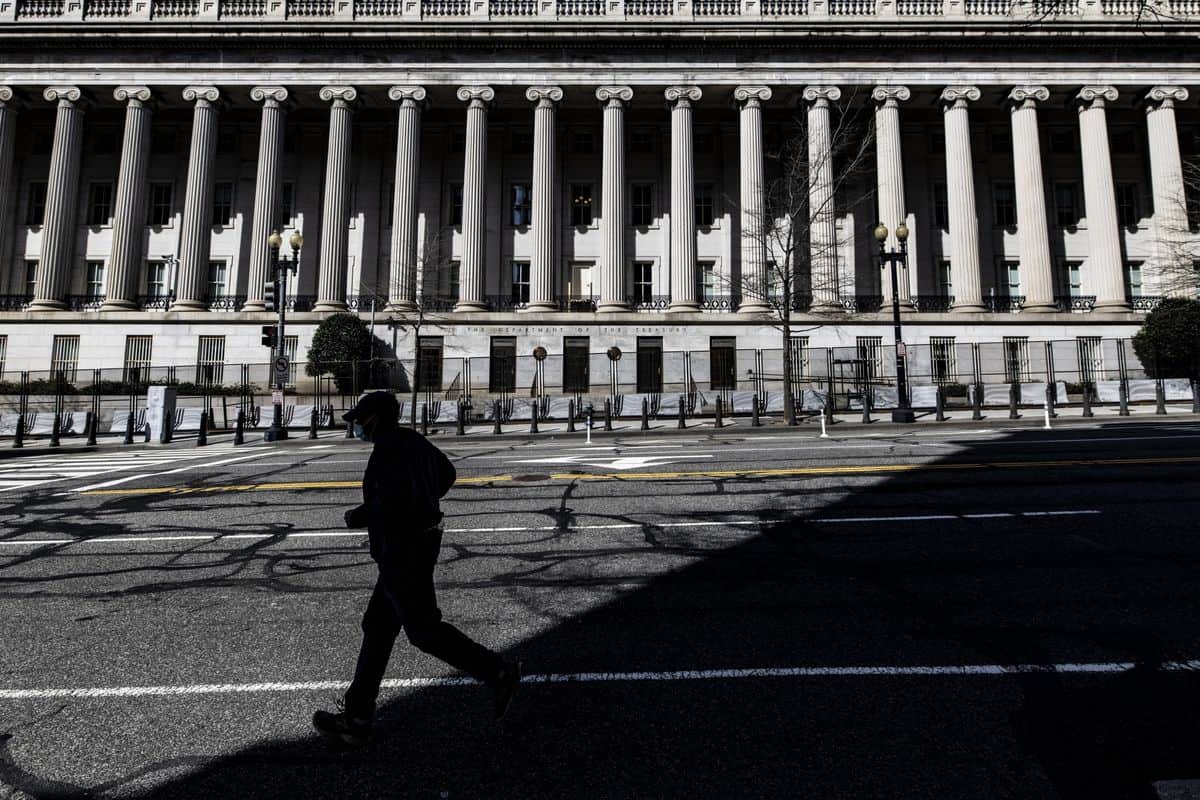A battered Treasuries market faces another trying week as it will have to absorb a massive slate of auctions focused in maturities that have gotten pummeled amid a brightening outlook for growth and inflation.
It’s been a month since a disastrous seven-year auction sent the bond market into a tailspin that reverberated across financial markets and helped put benchmark yields on the path to prepandemic heights. Now that maturity is on the calendar again, with a $62 billion offering looming as a source of anxiety for dealers in the week ahead.
The government will be selling into a market that’s endured a painful stretch, driving an index of longer maturities into a bear market. A key part of the yield curve just hit its steepest in over five years after the Federal Reserve reaffirmed plans to keep rates near zero through 2023. The seven-year area, especially vulnerable to shifting speculation on monetary policy, has taken a beating as traders bet the central bank won’t be able to wait that long. It’s underperforming surrounding maturities by the most since 2015.
“Supply is going to be a very important part of next week,” said Justin Lederer, a strategist at Cantor Fitzgerald. “We’ll really see what type of end-user demand shows up at these auctions, and if the seven-year last month was so poorly sponsored because of volatility of that day or whether it’s a continued theme. There’s just a lot of volatility now and questions about whether higher rates are going to impact equities.”
In February, when investors were already stepping back from bonds amid stimulus talks and the vaccine rollout, the government received record-low demand for the seven-year auction. The result added fueled to a Treasuries selloff that’s extended to a seventh straight week.
The auction slate highlights another concern. Treasuries mostly shrugged off the Fed’s decision Friday to let lapse bank regulatory exemptions that have buoyed the bond market since the beginning of the pandemic. But dealers have been unloading Treasuries, and for some analysts the Fed’s move risks raising stress around auctions.
Long-Maturity Pain
The fixed-income slump has hit longer maturities hardest. As of Thursday, a Bloomberg Barclays U.S. Treasury index that tracks debt with 10 years or more to maturity was down about 22% from its March 2020 peak, putting it in bear territory — at least by this gauge. The 10-year yield touched 1.75% this week, the highest since January 2020.
Yields and inflation expectations also took flight after Fed Chair Jerome Powell pushed back on any need to combat the rise. A market proxy for inflation over the coming decade surged to about 2.3% this week, the highest since 2013.
Powell reiterated this week that he would only see an issue with the bond selloff if it were accompanied by “disorderly conditions in markets or by persistent tightening of financial conditions that threaten the achievement of our goals.” Tech shares appeared to suffer at points this past week as yields extended their climb.
That leaves traders monitoring a slew of Fed speakers ahead, especially Powell, for fresh insights. A continued message of patience on tightening rates could spark some to exit bets that hikes may come earlier than the Fed projects.
“I suspect the Fedspeak will stay in line with Powell’s views of this week, that they are letting inflation grow a bit and probably aren’t going to be moving rates or tapering asset purchases” for a long time, said Tom di Galoma, managing director of government trading and strategy at Seaport Global.
He expects 10-year yields to rise to around 1.9%-1.95% by mid-year, and he sees scope for 2.25% depending on the composition and size of any additional stimulus proposals.

